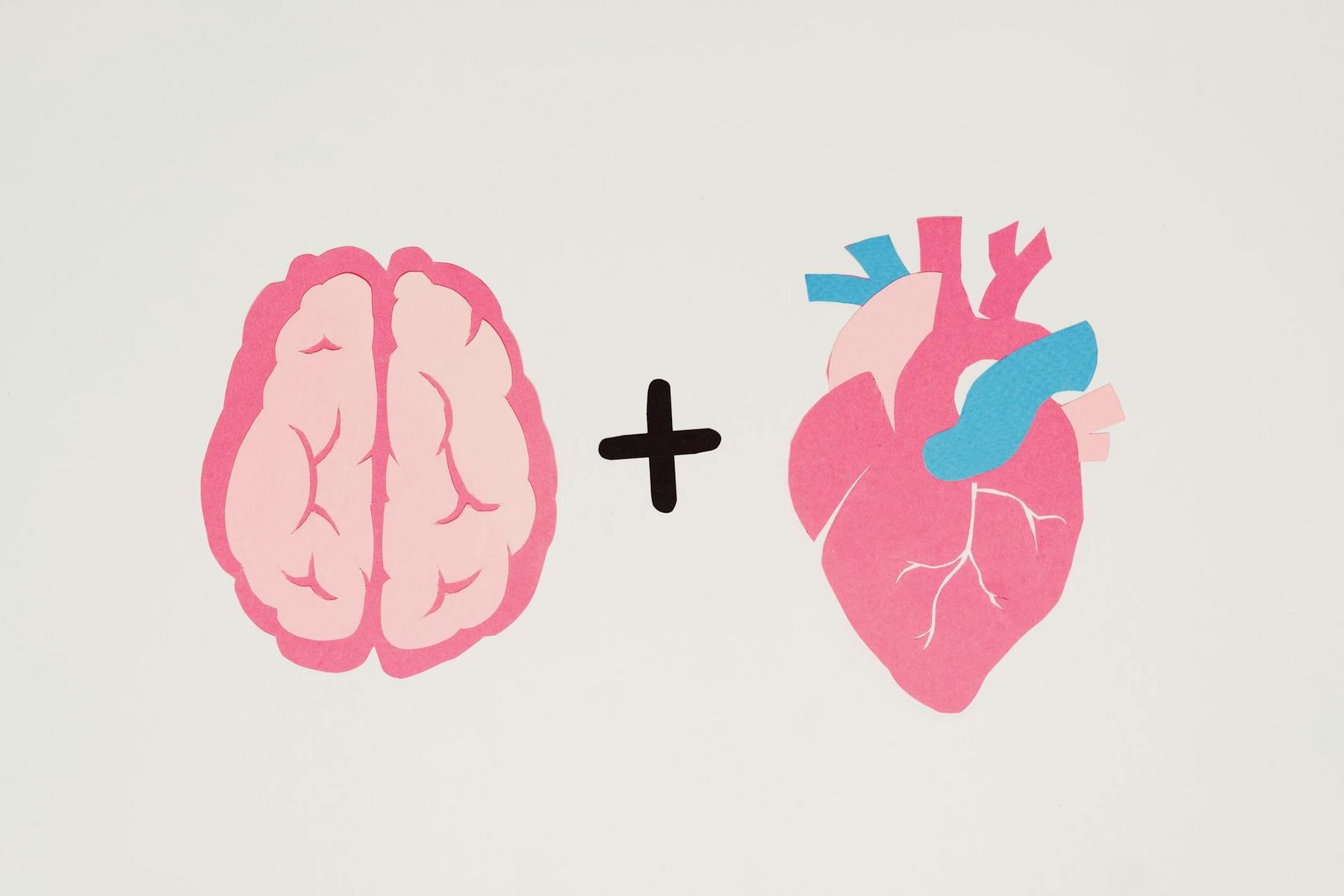The ancient practice of cultivating unconditional goodwill towards oneself and others has endured for over 2,500 years, yet remains profoundly relevant in contemporary life. As individuals navigate the complexities of modern existence—from social isolation to chronic stress—this systematic approach to developing compassion offers a structured pathway to emotional resilience and interpersonal harmony. Rooted in contemplative traditions that predate contemporary psychology, loving-kindness meditation (mettā bhāvanā) represents a sophisticated methodology for transforming mental states through intentional practice.
The practice emerges from a lineage that recognised the fundamental interconnectedness of human experience and the capacity for cultivating positive mental qualities through deliberate training. Unlike passive relaxation techniques, this approach actively engages practitioners in reshaping their relationship with themselves and others, offering a counterbalance to the self-focused anxieties that characterise much of contemporary life.
What Are the Historical Origins of Loving-Kindness Meditation?
Loving-kindness meditation originates from the earliest Buddhist texts, particularly the Mettā Sutta (Discourse on Loving-Kindness), which forms part of the Pāli Canon compiled in the first century BCE. The practice itself, however, predates these written records by several centuries, emerging from oral traditions in ancient India around the 5th century BCE.
The term “mettā” derives from the Pāli word for friendship, goodwill, and benevolence—a quality that extends beyond ordinary affection to encompass an unwavering wish for the wellbeing of all beings. Historical accounts suggest that the Buddha taught this practice to a group of monastics who encountered difficulties during forest retreats, experiencing fear and disturbance from environmental conditions. The systematic cultivation of benevolent thoughts served not merely as a coping mechanism but as a transformative practice that fundamentally altered their perception of themselves and their surroundings.
Within the broader framework of Buddhist contemplative practices, loving-kindness meditation belongs to the Brahmavihāras—four immeasurable qualities that include loving-kindness (mettā), compassion (karuṇā), empathetic joy (muditā), and equanimity (upekkhā). These qualities were termed “immeasurable” because they were to be extended without limitation or boundary, transcending social hierarchies, personal preferences, and geographical constraints.
The historical transmission of this practice occurred through monastic lineages across Southeast Asia, East Asia, and eventually to Western contexts in the mid-20th century. Each cultural transmission adapted the practice whilst maintaining its core methodology—the systematic extension of goodwill through specific phrases and mental cultivation.
How Does Traditional Loving-Kindness Meditation Practice Work?
The traditional structure of loving-kindness meditation follows a precise sequence designed to progressively expand one’s capacity for benevolence. This methodology recognises that developing genuine goodwill requires systematic training rather than mere intellectual assent to its value.
The practice typically commences with directing loving-kindness towards oneself—a foundational step often misunderstood in Western contexts that traditionally emphasised self-sacrifice over self-compassion. The rationale stems from the understanding that one cannot authentically offer to others what one fails to cultivate within oneself. Practitioners silently repeat phrases such as “May I be safe,” “May I be healthy,” “May I be peaceful,” or “May I live with ease,” allowing these intentions to permeate their awareness.
Following the establishment of self-directed goodwill, the practice expands concentrically:
Sequential Development of Loving-Kindness:
- Self as recipient: Establishing the foundation by directing goodwill inward
- Benefactor: Extending kindness to someone who has shown care or support
- Beloved person: Directing goodwill to someone dear without romantic attachment
- Neutral person: Cultivating benevolence towards someone for whom one feels neither attraction nor aversion
- Difficult person: Extending goodwill to someone who provokes negative reactions
- All beings: Expanding loving-kindness universally, without discrimination
This progression is neither arbitrary nor merely gradual; it represents a deliberate scaffolding that recognises the psychological reality of human attachment and aversion. By beginning with relationships where loving-kindness flows most naturally and progressively including more challenging recipients, practitioners develop genuine capacity rather than superficial sentiment.
The phrases themselves serve as vehicles for intention rather than magical formulations. Traditional texts suggest variations appropriate to individual temperament and cultural context, recognising that authentic practice requires personalisation whilst maintaining the essential structure.
What Distinguishes Loving-Kindness from Other Contemplative Practices?
Loving-kindness meditation occupies a distinctive position within the spectrum of contemplative practices, differentiated by its active cultivation of positive mental states rather than passive observation or concentration on a single object.
Unlike mindfulness meditation, which emphasises non-judgmental awareness of present-moment experience, loving-kindness meditation intentionally generates specific emotional qualities. Where mindfulness develops the capacity to observe mental phenomena without reactivity, loving-kindness actively shapes the content of consciousness towards benevolence and goodwill.
| Practice Feature | Loving-Kindness Meditation | Mindfulness Meditation | Concentration Meditation |
|---|---|---|---|
| Primary focus | Cultivating positive emotions | Observing present experience | Single-pointed attention |
| Mental approach | Active generation | Receptive awareness | Sustained focus |
| Emotional quality | Warmth and connection | Equanimous observation | Absorbed stability |
| Relationship to thoughts | Intentional positive phrases | Non-attached observation | Minimised thought activity |
| Primary development | Emotional resilience, empathy | Non-reactivity, clarity | Concentration, calm |
The practice also differs fundamentally from visualisation techniques common in other traditions. Whilst some practitioners may incorporate visual elements—imagining themselves or others bathed in light, for instance—the core practice relies on the felt sense of goodwill and the verbal formulation of benevolent wishes rather than elaborate imagery.
This distinction matters because it renders the practice accessible to individuals who struggle with visualisation whilst maintaining sufficient structure for systematic development. The repetitive nature of the phrases creates a rhythmic quality that supports sustained practice without requiring exceptional concentration abilities.
What Does Contemporary Understanding Reveal About This Practice?
Modern investigation into loving-kindness meditation has illuminated mechanisms that align with both traditional descriptions and contemporary understanding of neuroplasticity and emotional regulation. Researchers have documented measurable changes in practitioners’ responses to social stimuli, emotional reactivity, and interpersonal behaviour.
Systematic practice appears to enhance activity in brain regions associated with emotional processing and perspective-taking. The regular cultivation of benevolent intentions seems to strengthen neural pathways involved in empathic response and social connection, suggesting that the traditional claim of training the mind in positive qualities has a neurobiological basis.
Beyond individual neurological changes, research indicates that consistent practice influences observable behaviour. Practitioners demonstrate increased prosocial behaviour, enhanced emotional regulation during challenging interpersonal situations, and improved capacity to maintain equanimity when confronted with others’ distress—a quality that prevents empathic concern from deteriorating into personal distress or compassion fatigue.
The practice’s effects extend to physiological markers associated with stress response. Practitioners show alterations in inflammatory markers and autonomic nervous system activity, suggesting that the cultivation of positive emotions influences not merely psychological but also physiological wellbeing. These findings validate traditional assertions that mental cultivation impacts overall health whilst providing contemporary frameworks for understanding these mechanisms.
Importantly, research distinguishes between brief exposure to the practice and sustained, systematic training. Short-term engagement produces modest effects, whilst regular practice over extended periods generates more substantial and enduring changes—a finding consistent with traditional emphasis on consistent, long-term cultivation rather than sporadic engagement.
How Can One Establish an Authentic Practice?
Establishing a genuine loving-kindness meditation practice requires more than intellectual understanding; it demands consistent engagement with the methodology whilst navigating common obstacles that arise in systematic training.
Finding Appropriate Guidance
Authentic practice benefits from instruction rooted in traditional understanding whilst adapted to contemporary contexts. This involves seeking teachers or resources that maintain fidelity to the core methodology whilst acknowledging cultural translation. Recorded guided sessions can support initial practice, though eventually practitioners develop capacity for self-directed practice.
Creating Supportive Conditions
The physical and temporal context for practice matters significantly. Traditional guidance suggests practising in a quiet environment where one can sit comfortably without distraction. The duration initially matters less than consistency—regular ten-minute sessions establish neural patterns more effectively than sporadic longer sessions.
Navigating Common Challenges
Practitioners frequently encounter resistance when directing loving-kindness towards themselves, particularly in cultural contexts that conflate self-compassion with self-indulgence. This resistance itself becomes part of the practice—observing the difficulty whilst gently returning to the phrases without judgement.
When extending loving-kindness to difficult persons, practitioners often struggle between authentic engagement and forced sentiment. Traditional guidance suggests not forcing premature forgiveness but rather beginning with the simple wish that the difficult person be free from the suffering that drives their harmful behaviour. This approach maintains authentic practice whilst preventing the cynicism that arises from inauthentic sentiment.
Integrating with Daily Life
Beyond formal practice sessions, loving-kindness meditation extends into everyday interactions. Practitioners might silently offer brief phrases when encountering others throughout the day—on public transport, in queues, or during routine interactions. This integration transforms the practice from isolated sessions into a continuous orientation towards benevolence.
Applying Ancient Wisdom to Contemporary Challenges
The enduring relevance of loving-kindness meditation lies not in nostalgic romanticism about ancient wisdom but in its pragmatic applicability to persistent features of human experience. The practice addresses fundamental challenges that transcend cultural and temporal boundaries: the tendency towards self-criticism, the difficulty of maintaining goodwill amid interpersonal conflict, and the challenge of sustaining empathy without exhaustion.
In contemporary Australian society, characterised by increasing reports of social isolation and mental health challenges, the systematic cultivation of connection and goodwill offers a structured approach to rebuilding social and emotional resilience. The practice provides neither a panacea nor a substitute for comprehensive healthcare but rather a complementary methodology that addresses the relational and emotional dimensions of wellbeing.
The traditional Buddhist framework recognised that human flourishing requires more than the absence of suffering—it demands active cultivation of positive qualities. This insight aligns with contemporary understandings of positive psychology and wellbeing that emphasise building strengths rather than merely addressing deficits.
For practitioners in 2025, loving-kindness meditation represents a sophisticated technology for emotional development—one that requires no special equipment, involves no pharmaceutical intervention, and demands only consistent practice and patience with the gradual unfolding of its benefits. The practice acknowledges that transforming one’s relationship to oneself and others is neither quick nor easy, but it offers a proven methodology for those willing to engage systematically with the process.
As research continues to elucidate the mechanisms through which intentional cultivation of positive emotions influences wellbeing, the ancient practice finds renewed validation in contemporary frameworks. Yet its value extends beyond what can be measured in studies—the lived experience of practitioners across millennia attests to its capacity to fundamentally alter one’s experience of being human.
The invitation to practice remains remarkably simple: sit comfortably, direct your attention inward, and begin the systematic cultivation of goodwill—first towards yourself, then progressively expanding to include all beings.
Looking to discuss your health options? Speak to us and see if you’re eligible today.
How long should I practise loving-kindness meditation to experience benefits?
Traditional guidance suggests beginning with 10-15 minute daily sessions, maintaining consistency rather than focusing on session duration. Research indicates that measurable changes in emotional regulation and social responsiveness emerge after approximately 6-8 weeks of regular practice, though individual experiences vary considerably. The cumulative effect of sustained practice over months and years produces more profound transformations than intensive short-term engagement.
Can loving-kindness meditation be practised alongside other contemplative techniques?
Loving-kindness meditation complements rather than conflicts with other contemplative practices. Many practitioners integrate it with mindfulness meditation, using loving-kindness to cultivate positive qualities whilst mindfulness develops non-reactive awareness. Traditional Buddhist practice often combines multiple methodologies, recognising that different techniques address different aspects of mental development. The key lies in establishing sufficient proficiency in each practice rather than superficial dabbling across multiple techniques.
What should I do if I feel resistance when directing loving-kindness towards myself?
Resistance to self-directed loving-kindness represents a common and significant obstacle, particularly in cultural contexts that conflate self-compassion with selfishness. Rather than forcing through this resistance, traditional guidance suggests acknowledging the difficulty whilst gently returning to the phrases. Some practitioners find it helpful to imagine directing loving-kindness to themselves as a young child, which can bypass adult self-criticism. The resistance itself provides valuable insight into one’s relationship with oneself—an awareness that supports the gradual softening of harsh self-judgment.
Is loving-kindness meditation appropriate for individuals experiencing significant emotional difficulties?
Whilst loving-kindness meditation offers considerable benefits for emotional wellbeing, individuals experiencing acute psychological distress should practise under appropriate professional guidance. The practice can occasionally intensify difficult emotions before they resolve, and some individuals may benefit from establishing basic emotional stability through other means before engaging with systematic loving-kindness practice. Healthcare professionals can assess individual circumstances and recommend appropriate timing and support for contemplative practice.
How does one authentically extend loving-kindness to truly difficult persons?
Extending genuine loving-kindness to individuals who have caused harm represents one of the practice’s most challenging yet transformative aspects. Traditional guidance suggests not forcing premature forgiveness or denying legitimate hurt, but rather beginning with the recognition that the difficult person suffers—their harmful behaviour arising from their own confusion and pain. The practice involves wishing them free from the suffering that drives harmful actions, which differs from condoning their behaviour. This approach maintains authentic practice whilst preventing the cynicism that emerges from false sentiment.













